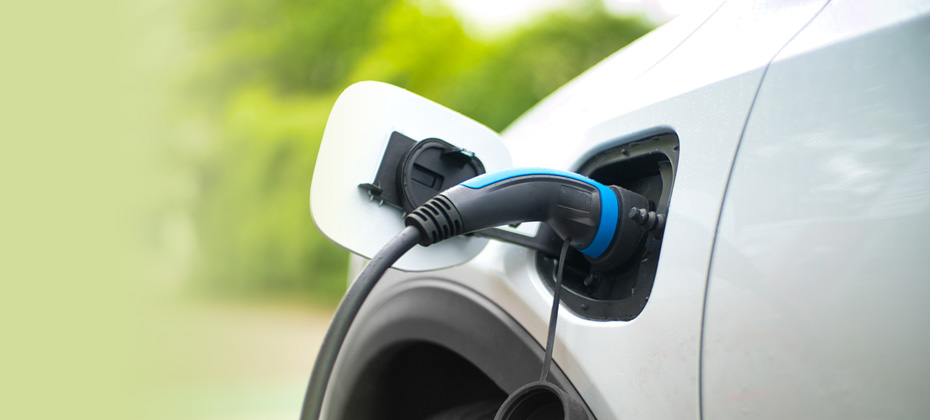Industries

"Out with the old and in with the new" is often used when talking about a fresh start or change we make in life, such as getting a new job, breaking bad habits or making room in our closets for a new wardrobe. But the saying doesn't exactly hold true in terms of business growth. While acquiring new customers is critical, increasing customer retention rates by just 5% can increase profits by up to 95%.1 So, what can your organization do to improve customer retention? Here are three quick tips: Stay informed Keeping up with your customers’ changing interests, behaviors and life events enables you to identify retention opportunities and create personalized credit marketing campaigns. Are they new homeowners? Or likely to purchase a vehicle within the next five months? With a comprehensive consumer database, like Experian’s ConsumerView®, you can gain granular insights into who your customers are, what they do and even what they will potentially do. To further stay informed, you can also leverage Retention TriggersSM, which alert you of your customers changing credit needs, including when they shop for new credit, open a new trade or list their property. This way, you can respond with immediate and relevant retention offers. Be more than a business – be human Gen Z's spending power is projected to reach $12 trillion by 2030, and with 67% looking for a trusted source of personal finance information,2 financial institutions have an opportunity to build lifetime loyalty now by serving as their trusted financial partners and advisors. To do this, you can offer credit education tools and programs that empower your Gen Z customers to make smarter financial decisions. By providing them with educational resources, your younger customers will learn how to strengthen their financial profiles while continuing to trust and lean on your organization for their credit needs. Think outside the mailbox While direct mail is still an effective way to reach consumers, forward-thinking lenders are now also meeting their customers online. To ensure you’re getting in front of your customers where they spend most of their time, consider leveraging digital channels, such as email or mobile applications, when presenting and re-presenting credit offers. This is important as companies with omnichannel customer engagement strategies retain on average 89% of their customers compared to 33% of retention rates for companies with weak omnichannel strategies. Importance of customer retention Rather than centering most of your growth initiatives around customer acquisition, your organization should focus on holding on to your most profitable customers. To learn more about how your organization can develop an effective customer retention strategy, explore our marketing solutions. Increase customer retention today 1How investing in cardholder retention drives portfolio growth, Visa. 2Experian survey, 2023.

Pickup trucks have long been a staple of the automotive industry, and the data show this is still the case—even seeing some growth in the third quarter of 2022. Experian’s Automotive Consumer Trends Report: Q3 2022 took a deeper dive into pickup trucks and found they accounted for 20.4% of new retail vehicle registrations, increasing from 16% in Q3 2021 and surpassing sedans (16.5%) and SUVs (11.4%). The growth in pickup truck popularity is partially due to their functionality and towing capabilities, among other features that smaller vehicles may not offer. As more consumers continue to be drawn to pickup trucks, it’s important for automotive professionals to not oversimplify by grouping potential shoppers together, but instead, dive into the data to understand the current trends, such as who is buying and the type of truck segments they may be interested in. Breaking down pickup truck registration trends by generation When looking at who is in the market for a pickup truck, data shows Gen X made up the largest percentage of buyers in Q3 2022, comprising 34.6%, with Baby Boomers coming in at 28.3%, and Millennials not too far behind at 25.2% this quarter. Knowing who is making up majority of the pickup truck registrations and the types of trucks they are looking for goes hand-in-hand when automotive professionals are searching for ways to market strategically and ensure they are reaching the right audience. For instance, in Q3 2022, 43.1% of Gen X buyers opted for a full-size luxury truck, such as the Rivian R1T, while 35.7% preferred a full-size truck, such as the Ford F-150, and 32.9% bought a midsize truck, such as the Toyota Tacoma. By comparison, 20.4% of Baby Boomers bought a full-size luxury truck in Q3 2022, 27% chose a full-size truck, and 30.7% opted for a midsize truck. Data shows Millennials preferred a full-size luxury truck over any other type—coming in at 30.6%, while 26% opted for a full-size truck, and 23.3% bought a midsize truck. As consumer preference continues to shift throughout the automotive industry, analyzing and leveraging data will allow professionals to properly assist consumers when looking for a vehicle that fits their needs, as well as stay up-to-date on the current trends. To learn more about pickup trucks and other consumer trends, watch the entire Automotive Consumer Trends Report: Q3 2022 webinar.

In our continued efforts to make vehicle information and insights quick and easy to read for auto dealers, we’ve redesigned our AutoCheck vehicle history report. As competition for used vehicles remains high, dealers must make quick decisions on whether to acquire a potential vehicle. Whether you need to evaluate a trade-in or want to make a flat-out offer on a vehicle, quickly accessing the vehicle’s history is only the first step. We’ve made it even easier for you to get key information in our newly designed report. We are confident that the newly designed report will continue to help dealers better manage risk and confidently buy and sell the right vehicles.Did you know?• AutoCheck has data from over 95% of U.S. auction houses with 99.82% manufacturer coverage of open recall data for vehicles on the road • Experian aggregates and analyzes tens of thousands of distinct accident sources; many provided only to AutoCheck • AutoCheck has exclusive Auction Announcement data for up to 2.7% of vehicles in operation (that have been to an auction)• We’re the only VHR provider integrated on all the top consumer vehicle shopping sitesHow AutoCheck can help improve your business You may also be interested in learning how AutoCheck VHRs can improve your business by reading Vehicle Detail Pages with a Free VHR Have Higher Lead and Sale Conversion Rates or how we helped a large insurance company better manage risk in our case study, LexisNexis Helps Manage Risk for National Insurance Company. Learn more about the benefits of becoming an AutoCheck subscriber.

To help the industry better understand the widespread growth, ahead of the show we compiled an Auto Finance Year-in-Review report to break down all things EV—from financing trends to vehicle segments and more.

The economic volatility of the last several years has left local, state, and even federal budgets tighter than usual, meaning agencies must collect every dollar owed and do it efficiently. So how do agencies continue to deliver the services citizens expect and have given their tax dollars to support? It starts with an efficient, effective collections strategy. The need for collections An important source of revenue for many government agencies is overdue obligations. These might include: Business, personal, and property taxesChild supportFinesCourt fees By collecting on these obligations – and doing so efficiently – agencies can better fund themselves to serve their citizens. Debt collections process While many agencies are, at least initially, responsible for their debt management efforts, there are many layers to the collections process. Step 1: The agency manages the collections process independently (manually or automatically). Step 2: The Bureau of Fiscal Service takes over servicing delinquent debts and work with the debtor to pay it, suspend it, or end collections efforts. Step 3: The debt may be sent to a Private Collection Agency (PCA). Better collections with better data To collect effectively, agencies need to prioritize and streamline debt assessment and collection, which starts with better data. First, better data – like the data provided via skip tracing – enables better management of data surrounding moves, name changes, changes in marital status, and more, all of which makes for better collections efforts. Second is prioritizing collections efforts to focus on those citizens with the best ability to repay, making the most of existing resources and leveraging automated tools where available. Third is keeping collections efforts compliant with all rules and regulations, which is made easier with the right partner. How Experian can help Experian assists organizations of all shapes and sizes to monitor, segment, and prioritize receivable accounts. We leverage timely and relevant information for greater insight into skip tracing, identify the best times for collections efforts, and monitor, measure, test, and refine strategies to maximize results. To learn more about how Experian can help your agency maximize your collections efforts, visit us or request a call. Learn more

Believe it or not, 2023 is underway, and the new year could prove to be a challenging one for apartment operators in certain ways. In 2021 and into the beginning of 2022, demand for apartment rentals approached record levels, which shrunk vacancy rates and increased monthly rents. The rest of the year remained stagnant while other regions saw some decline, but inflation and other economic factors have many apartment communities confronted with labor shortages, and other challenges which can certainly make leasing and operating properties difficult. Against that backdrop, here are some of the technologies and solutions operators should consider for optimizing their success and efficiencies in 2023 and beyond. Tools that allow prospective residents to have a fully digital and contactless leasing experience — During the pandemic, many operators rushed to implement virtual tours, onsite self-guided tours and other solutions that allowed prospects to apply for and finalize their leases remotely. Prospective renters have undoubtedly grown fond of navigating the leasing process from their homes and taking self-guided tours when onsite, and the demand for digital solutions will surely continue even after COVID distancing is no longer a factor. Therefore, apartment owners and operators should think of these capabilities as long-term investments and always seek ways to optimize the digital leasing experience they provide. Along those lines, forward-thinking operators are employing solutions that allow them to embed credit functionality into their websites and mobile apps using modern, RESTful APIs like the Experian ConnectSM API. Not only does it enhance the information included in a lease application with credit report data, but it also allows prospective renters to easily apply for more than one property at once, enhancing their experience at the same time. Automated lease application form fill — By using information entered by a lease applicant (such as first name, last name, postal code and the last four digits of a Social Security number), this technology uses information from credit files to automatically fill other data fields in a lease application. This tool reduces the effort required by prospective renters to complete the application process, resulting in a better user experience, faster completions, greater accuracy and reduced application abandonment. Automated verification of income, assets, and employment — These solutions eliminate the need for associates to manually verify these components of a lease application. Manual verification is both time-consuming and prone to human error. In addition, automated tools eliminate the opportunity for applicants to supply falsified supporting documentation. The best part about verification is the variety of options available; leasing managers can pick and choose verification options that meet their needs. Renter Risk Score™ and custom-built scores and models applying RentBureau data — These options offer a score designed expressly to predict the likelihood that an applicant will pay rent. Renter risk score can be purchased with preset score logic, or for high-volume decisions, a model can be built calibrated for your specific leasing decisioning needs. A rental payment history report — The RentBureau Consumer Profile tool can provide detailed insight into a lease applicant's history of meeting their lease obligations, which is invaluable information during the lease application process. Having a tool to report rental payment histories to credit bureaus can be a powerful financial amenity. By reporting these payments, operators can help residents build credit histories and improve financial well-being. Such an amenity can attract and retain residents and provide them with a powerful incentive to pay rent on time and in full. In the end, tools that seek to manage risk and create improved experiences for prospective renters have a multitude of benefits. They create meaningful efficiencies for onsite staff by greatly reducing the time, resources and paperwork required to process applications and verify applicant information. This gives overextended associates more time to handle their many other responsibilities. Beyond just efficiency savings, these technologies and solutions also can help operators avoid the complications and loss of income that result from evictions. In fact, the National Association of Realtors estimates that average eviction costs $7,685. Managing risk and providing the best possible customer experience should always be top of mind for rental housing operators. And with the solutions outlined above, they can effectively accomplish those goals in 2023 and beyond.

How businesses respond to economic uncertainty can determine whether they get ahead or fall behind. To better prepare for the coming months, you must remain up to date on the latest economic developments to better understand and evolve with changing consumer needs. With insight into critical macroeconomic and consumer trends, you can proactively manage your portfolio, enhance your decisioning and seize new opportunities. Grab a cup of coffee and join Experian's Shawn Rife, Client Executive, and Josee Farmer, Economic Analyst, during our fireside chat on February 16 @ 1 P.M. ET/10 A.M. PT. Our expert speakers will provide a view of the latest economic and market trends, their impact on consumers, and how financial institutions can survive and thrive. Highlights include: Macroeconomic and consumer credit trends Economic implications on consumer behavior How financial institutions can adapt Register now

With fraud expected to surge amid uncertain economic conditions, fraudsters are preparing new deception techniques to outsmart businesses and deceive consumers. To help businesses prepare for the coming fraud threats, we created the 2023 Future of Fraud Forecast. Here are the fraud trends we expect to see over the coming year: Fake texts from the boss: Given the prevalence of remote work, there’ll be a sharp rise in employer text fraud where the “boss” texts the employee to buy gift cards, then asks the employee to email the gift card numbers and codes. Beware of fake job postings and mule schemes: With changing economic conditions, fraudsters will create fake remote job postings, specifically designed to lure consumers into applying for the job and providing private details like a social security number or date of birth on a fake employment application. Frankenstein shoppers spell trouble for retailers: Fraudsters can create online shopper profiles using synthetic identities so that the fake shopper’s legitimacy is created to outsmart retailers’ fraud controls. Social media shopping fraud: Social commerce currently has very few identity verification and fraud detection controls in place, making the retailers that sell on these platforms easy targets for fraudulent purchases. Peer-to-peer payment problems: Fraudsters love peer-to-peer payment methods because they’re an instantaneous and irreversible way to move money, enabling fraudsters to get cash with less work and more profit “As fraudsters become more sophisticated and opportunistic, businesses need to proactively integrate the latest technology, data and advanced analytics to mitigate the growing fraud risk,” said Kathleen Peters, Chief Innovation Officer at Experian Decision Analytics in North America. “Experian is committed to continually innovating and bringing solutions to market that help protect consumers and enable businesses to detect and prevent current and future fraud.” To learn more about how to protect your business and customers from rising fraud trends, download the Future of Fraud Forecast and check out Experian’s fraud prevention solutions. Future of Fraud Forecast Press Release

Putting customers at the center of your credit marketing strategy is key to achieving higher response rates and building long-term relationships. To do this, financial institutions need fresh and accurate consumer data to inform their decisions. Atlas Credit was looking to achieve higher response rates on its credit marketing campaigns by engaging consumers with timely and personalized offers. The company implemented Experian’s Ascend Marketing, a customer marketing and acquisition engine that provides marketers with accurate and comprehensive consumer credit data to build and deploy intelligent marketing campaigns. With deeper insights into their consumers, Atlas Credit created timely and customized credit offers, resulting in a 185% increase in loan originations within the first year of implementation. Additionally, the company was able to effectively manage and monitor its targeting strategies in one place, leading to improved operational efficiency and lower acquisition costs. To learn more about creating better-targeted marketing campaigns and enhancing your strategies, read the full case study. Download the case study Learn more

Alternative credit scoring has become mainstream. Lenders that use alternative credit scores can find opportunities to expand their lending universe without taking on additional risk and more accurately assess the credit risk of traditionally scoreable consumers. Obtaining a more holistic consumer view can help lenders improve automation and efficiency throughout the customer lifecycle. What is alternative credit scoring? Alternative credit scoring models incorporate alternative credit data* that isn't typically found on consumer credit reports. These scores aren't necessarily trying to predict alternative outcomes. The goal is the same — to understand the likelihood that a borrower will miss payments in the future. What's different is the information (and sometimes the analytical techniques) that inform these predictions.Traditional credit scoring models solely consider information found in consumer credit reports. There's a lot of information there — Experian's consumer credit database has data on over 245 million consumers. But although traditional consumer data can be insightful, it doesn't necessarily give lenders a complete picture of consumers' creditworthiness. Alternative credit scores draw from additional data sources, including: Alternative financial services: Credit data from alternative financial services (AFS) can tell you about consumers' experiences with small-dollar installment loans, single-payment loans, point-of-sale financing, auto title loans and rent-to-own agreements. Buy Now Pay Later: Buy Now Pay Later (BNPL) borrowing is popular with consumers across the scoring spectrum, and lenders can use access to open BNPL loans to better assess consumers' current capacity. Rental payments: Landlords, property managers, collection companies, rent payment services and consumer-permissioned data can give lenders access to consumers' rent payment history. Full-file public records: Credit reports generally only include bankruptcy records from the previous seven to ten years. However, lenders with access to full-file public records can also learn about consumers' property deeds, address history, and professional and occupational licenses. READ: Take a deep dive into Experian's State of Alternative Credit Data report to learn more about the different types of alternative credit data and uses across the loan lifecycle. With open banking, consumers can now easily and securely share access to their banking and brokerage account data — and they're increasingly comfortable doing so. In fact, 70% would likely share their banking data for better loan rates, financial tools or personalized spending insights.Tools like Experian Boost allow consumers to add certain types of positive payment information to their Experian credit reports, including rent, utility and select streaming service payments. Some traditional scores consider these additional data points, and users have seen their FICO Score 8 from Experian boosted by an average of 13 points.1 Experian Go also allows credit invisible consumers to establish a credit report with consumer-permissioned alternative data. The benefits of using alternative credit data The primary benefit for lenders is access to new borrowers. Alternative credit scores help lenders accurately score more consumers — identifying creditworthy borrowers who might otherwise be automatically denied because they don't qualify for traditional credit scores. The increased access to credit may also align with lenders' financial inclusion goals.Lenders may additionally benefit from a more precise understanding of consumers who are scoreable. When integrated into a credit decisioning platform, the alternative scores could allow lenders to increase automation (and consumers' experiences) without taking on more credit risk. The future of alternative credit scoring Alternative credit scoring might not be an alternative for much longer, and the future looks bright for lenders who can take advantage of increased access to data, advanced analytics and computing power.Continued investment in alternative data sources and machine learning could help bring more consumers into the credit system — breaking barriers and decreasing the cost of basic lending products for millions. At the same time, lenders can further customize offers and automate their operations throughout the customer lifecycle. Partnering with Experian Small and medium-sized lenders may lack the budget or expertise to unlock the potential of alternative data on their own. Instead, lenders can turn to off-the-shelf alternative models that can offer immediate performance lifts without a heavy IT investment.Experian's Lift PlusTM score draws on industry- leading mainstream credit data and FCRA-regulated alternative credit data to provide additional consumer behavior insights. It can score 49% of mainstream credit-invisible consumers and for thin file consumers with a new trade, a 29% lift in scoreable accounts. Learn more about our alternative credit data scoring solutions. Learn more * When we refer to “Alternative Credit Data," this refers to the use of alternative data and its appropriate use in consumer credit lending decisions as regulated by the Fair Credit Reporting Act (FCRA). Hence, the term “Expanded FCRA Data" may also apply in this instance and both can be used interchangeably.1Experian (2023). Experian Boost

E-commerce digital transactions are rapidly increasing as online shopping becomes more convenient. In fact, e-commerce is projected to exceed 17% of all retail sales worldwide by 2027. As a result, opportunities for fraudsters to exploit businesses and consumers for monetary gain are reaching high levels. Businesses must be aware of the risks associated with card not present (CNP) fraud and take steps to protect themselves and their customers. What is card not present fraud? CNP fraud occurs when a criminal uses a stolen or compromised credit card to make a purchase online, over the phone, or through some other means where the card is not physically present at the time of the transaction. This type of fraud can be particularly difficult to detect and prevent, as it relies on the use of stolen card information rather than the physical card itself. CNP fraud can yield significant losses for businesses — these attacks are estimated to reach a staggering $28 billion in losses by 2026. Many have adopted various fraud prevention and identity resolution and verification tools to better manage risk and prevent fraud losses. Since much of the success or failure of e-commerce depends on how easy merchants make it for consumers to complete a transaction, incorporating CNP fraud prevention and identity verification tools in the checkout process should not come at the expense of completing transactions for legitimate customers. What do we mean by that? Let’s look at false declines. What is a false decline? False declines occur when legitimate transactions are mistakenly declined due to the business's fraud detection system incorrectly flagging the transaction as potentially fraudulent. This can not only be frustrating for cardholders, but also for merchants. Businesses may lose the sale and also be on the hook for any charges that result from the fraudulent activity. They can also result in damage to the business's reputation with customers. In either case, it is important for businesses to have measures in place to mitigate the risks of both. How can online businesses increase sales without compromising their fraud defense? One way to mitigate the risk of CNP fraud is to implement additional security measures at the time of transaction. This can include requiring additional verification information, such as a CVV code or a billing zip code to further authenticate the card holder’s identity. These measures can help to reduce the risk of CNP fraud by making it more difficult for fraudsters to complete a transaction. Machine learning algorithms can help analyze transaction data and identify patterns indicating fraudulent activity. These algorithms can be trained on historical data to learn what types of transactions are more likely to be fraudulent and then be used to flag potentially fraudulent transactions before it occurs. Businesses require data and technology that raise confidence in a shopper’s identity. Currently, the data merchants receive to approve transactions is not enough. A credit card owner verification solution like Experian Link fills this gap by enabling online businesses to augment their real-time decisions with data that links customer identity to the credit card being presented for payment to help verify the legitimacy of a transaction. Using Experian Link, businesses can link names, addresses and other identity markers to the customer’s credit card. The additional data enables better decisions, increased sales, decreased costs, a better buyer experience and better fraud detection. Get started with Experian Link™ - our frictionless credit card owner verification solution. Learn more

In the last decade, electric vehicle registrations have increased by 3,600%, and the demand for alternative fuel vehicles continues to soar. Manufacturers are rapidly expanding alternative fuel operations to keep up with the demand from consumers that has expanded across all generations. Target in-market EV consumers Today’s automotive marketers understand that finding targeted consumer audiences is critical to a successful marketing strategy. With more electric vehicle model options available and improved infrastructure driving popularity, we’re seeing automotive marketers wanting to target in-market EV consumers as well as current alternative fuel vehicle owners. Applying data-driven insights to find targeted consumer audiences is critical to today’s marketing strategies. For example, as of Q2 2022, 23.5% of plug-in hybrid owners that returned to market, migrated to an electric vehicle As a marketer, would it be helpful to select In-Market Likely Segment Switchers as your target audience for your marketing campaign? Or Hybrid owners as a whole? Experian Automotive has a variety of alternative fuel owner audiences and in-market consumer audiences to help marketers target the right consumer with the right message on the right channel. The Experian Marketing Engine Syndicated Auto Audience portfolio includes 70+ audiences focused on likely buyers and owners of Electric Vehicle (EV) and Plug-In Hybrid (PHEV) vehicles. Of Experian’s 750+ syndicated auto audiences, we offer a subset of over 25 audiences focused on individual EV/PHEV vehicle models. How to find EV audiences on your preferred platform Experian electric vehicle audiences are available in the Auto Audience area of your preferred platform. Simply navigate to Experian Automotive’s Audiences to find Electric Vehicle related audiences, as well as all of Experian’s Auto Audiences. To learn more about Auto Audiences for Electric Vehicles, contact our Subject Matter Expert, Gary Meteer.

For a credit prescreen marketing campaign to be successful, financial institutions must first define their target audience. But just because you’ve identified your ideal customers, it doesn’t mean that every individual within that group has the same needs, interests or behaviors. As such, you’ll need to use data-driven customer segmentation to create messages and offers that truly resonate. Customer segmentation example Customer segmentation is the practice of dividing your target audience into smaller sub-groups based on shared characteristics, behaviors or preferences. This allows you to develop highly targeted marketing campaigns and engage with individual groups in more relevant and meaningful ways. What role does data play in customer segmentation? When it comes to segmenting customers, there isn’t a one-size-fits-all approach that works perfectly for all campaigns and markets. However, regardless of the campaign, you’ll need accurate and relevant data to inform your segmenting strategy. Let’s walk through a customer segmentation example. Say you want to launch a credit marketing campaign that targets creditworthy consumers in the market for a new mortgage. Some of the most influential data points to consider when segmenting include: Demographics Demographic data allows you to get to know your customers as individuals in terms of age, gender, education, occupation and marital status. If you want to create a segment that consists of only middle-aged consumers, leveraging demographic data makes it easier to identify these individuals, refine your messaging and predict their future buying behaviors. Life stage Life event data, such as new parents and new homeowners, helps you connect with consumers who have experienced a major life event. Because you’re targeting consumers in the market for a new mortgage, using fresh and accurate life stage data can help you create an engaging, event-based marketing campaign relevant to their timeline. Financial Financial data segments go beyond income and estimate the way consumers spend their money. With deeper insights into customers’ financial behaviors, you can more accurately assess creditworthiness and make smarter lending decisions. Transactional Transactional data segments group your customers according to their unique buying habits. By getting to know why they purchase your products or their frequency of spend, you can gain a better understanding of who your most engaged customers are, segment further and find opportunities for cross-sell and upsell. Why is data-driven customer segmentation critical for your business? With data-driven customer segmentation, you can develop relevant marketing campaigns and messages that speak to specific audiences, enabling you to demonstrate your value propositions more clearly and deliver personalized customer experiences. Additionally, because customer segmentation enables you to tailor your marketing efforts to those most likely to respond, you can achieve higher conversions while cutting down on marketing spend and resources. Ready to get started? While data-driven customer segmentation may seem overwhelming, Experian can help fill your marketing gaps with custom-based data, audiences and solutions. Armed with a better understanding of your consumers’ patterns and journeys, you can start targeting them more effectively. Create highly targeted credit marketing campaigns

Strategic automotive marketing and measurement are getting more complicated with the increase in consumer channels and devices. This makes it harder for marketers to obtain a complete measurement picture. Measurement terminology is also evolving. Here's a look at some of today’s key definitions to familiarize you with the nuances and challenges it may already bring to your analytics. What is the open web? The open web is the web as a whole or the public side of the web with all the millions of sites that do not require a subscription or fee to use them. For example, in our industry, this would be an auto manufacturer’s website, a dealership’s website, or an online consumer shopping portal where you list your vehicles for sale – all of these are on the open web. These sites use open-source standards to deliver content to consumers without a separate app or company acting as gatekeepers. However, tracking approaches on the open web will shift as cookies will eventually disappear. What is a walled garden? A walled garden is a closed platform or ecosystem (e.g., Amazon, Apple, Facebook) wherein the platform provider controls the content, applications, and/or media and restricts access as it sees fit. The publisher offers consumer privacy and rich first-party data to advertisers, but the measurement is limited to activity within the ‘walls’ of the garden. From an advertising perspective, buyers can only access these platforms through their own buying tools; they do not give access to any independent platforms. The publisher (the Walled Garden) handles all the buying, serving, tracking, and reporting within their ecosystem. So, let’s say you are an automotive consumer checking out vehicles. If you’re reading your Facebook feed on your phone and you see an advertisement for a vehicle or a dealership, that OEM or dealership is advertising in a walled garden – in this case, the walled garden is Facebook. The challenge to an advertiser is that they can only measure activity that occurred within that ecosystem using the walled garden’s platform and measurement tools. What is a hedged garden? The “hedged garden” is a new industry concept. A hedged garden is when a network of publishers work together to activate first-party data sets in a privacy-compliant way across many partners at scale. These publishers run their businesses with large amounts of first-party consumer data. They often do not own or operate complete buying stacks. For example, companies like Target and Walmart let advertisers employ their data on shoppers for ad targeting, but brands can use their own buying tools. Other examples of a hedged garden might include Connected TV platforms such as Vizio’s or Samsung’s in-house ad businesses. If you’re sitting on your couch watching your Vizio-connected TV and you see an advertisement for a dealership or a manufacturer, they are advertised within that hedged garden. As an advertiser, the advantage is that you can use their buying tool when targeting shoppers for your advertising. How to fill in the gaps the walled garden may leave open The walled garden can challenge marketers who desire cross-channel activation and measurement. If you're a marketer working within a walled garden, we can work with the data you have to give you a complete picture of your audience’s digital journey. Our experience and vast databases, including vehicle, credit, and customer insights, allow us to continue building strong partnerships within the fast-growing (Hedged Garden) ecosystem. We can help. Our Subject Matter Expert, Laurel Malhotra will be happy to answer any questions you may have. Contact her today.

According to Experian’s Automotive Market Trends Report: Q3 2022, new vehicle registrations were down 16.4%, going from 12.2 million through Q3 2021 to 10.2 million this quarter. Used vehicles experienced a 12.6% decline, coming in at 29.8 million through Q3 2022, from 34.1 million the previous year.